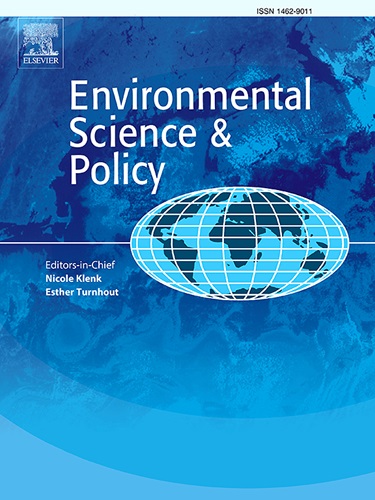风险承受能力和气候变化适应:政策假设和影响需要透明度
IF 5.2
2区 环境科学与生态学
Q1 ENVIRONMENTAL SCIENCES
引用次数: 0
摘要
为了为政策重点提供信息,气候变化风险评估往往是通过当前计划的行动与有效管理风险所需行动之间的适应差距来制定的。剩余的风险仍然需要通过自主和被动的反应来管理。因此,适应政策假定一定程度的风险容忍度,但这通常不明确。缺乏透明度可能导致期望不匹配,特别是当风险增加或与专家的看法不同时。它还限制了更广泛地参与适应决策。这些问题在概念上进行了探讨,并通过参考第三个国家适应计划的英国案例研究进行了探讨,该计划的总体目标表明了政策交付的悖论,该悖论也受到了法律挑战。这种悖论的例证是自上而下的恢复力建设或风险降低目标,这些目标在假定的风险承受阈值和管理整个社会剩余风险的影响上是模糊的。因此,风险评估和政策框架都需要明确声明假定的风险承受能力及其影响,特别是对承担风险的人的影响。这种开放性将与在政策、利益相关者和公众之间就风险管理结果的预期和可行性进行“诚实对话”的呼吁相一致。审议可能涉及困难的规范问题,特别是调和日益增加的风险与当前资源限制的挑战。但最终需要更广泛的社会适应参与和增强适应能力,包括增强集体复原力的愿望。因此,提出了建议,以便更好地阐明适应研究和政策中风险承受能力的区别。本文章由计算机程序翻译,如有差异,请以英文原文为准。
Risk tolerance and climate change adaptation: A need for transparency in policy assumptions and implications
To inform policy priorities, climate change risk assessments are often framed through an adaptation gap between current planned actions and those required to manage risk effectively. Residual risks remain to be managed through autonomous and reactive responses. Adaptation policies therefore assume a level of risk tolerance, but this is usually not made explicit. This lack of transparency can lead to a mismatch in expectations, especially when risk is increasing or perceived differently from experts. It also constrains wider engagement in adaptation decisions. These issues are explored both conceptually and through a UK case study referencing the third National Adaptation Programme whose generalised objectives demonstrate a policy delivery paradox that has also been subject to legal challenge. The paradox is exemplified by top-down objectives for resilience building or risk reduction that are ambiguous on assumed risk tolerance thresholds and implications for managing residual risks across all of society. A case is therefore made that both risk assessments and policy frameworks need explicit declarations on assumed risk tolerance and its implications, especially regarding those bearing the risks. This openness would be consistent with calls for an ‘honest conversation’ on expectations and viability of risk management outcomes between policy, stakeholders and public. Deliberation may involve difficult normative issues, especially to reconcile increasing risks against current resource constraint challenges. But it is ultimately necessary for wider societal adaptation engagement and increased adaptive capacity, including aspirations for enhanced collective resilience. Recommendations are hence provided to better explicate risk tolerance distinctions in adaptation research and policy.
求助全文
通过发布文献求助,成功后即可免费获取论文全文。
去求助
来源期刊

Environmental Science & Policy
环境科学-环境科学
CiteScore
10.90
自引率
8.30%
发文量
332
审稿时长
68 days
期刊介绍:
Environmental Science & Policy promotes communication among government, business and industry, academia, and non-governmental organisations who are instrumental in the solution of environmental problems. It also seeks to advance interdisciplinary research of policy relevance on environmental issues such as climate change, biodiversity, environmental pollution and wastes, renewable and non-renewable natural resources, sustainability, and the interactions among these issues. The journal emphasises the linkages between these environmental issues and social and economic issues such as production, transport, consumption, growth, demographic changes, well-being, and health. However, the subject coverage will not be restricted to these issues and the introduction of new dimensions will be encouraged.
 求助内容:
求助内容: 应助结果提醒方式:
应助结果提醒方式:


